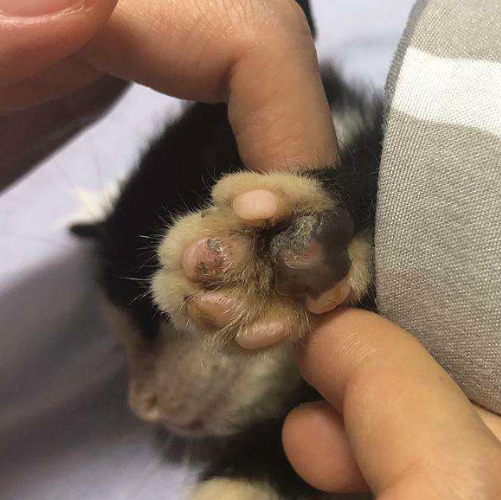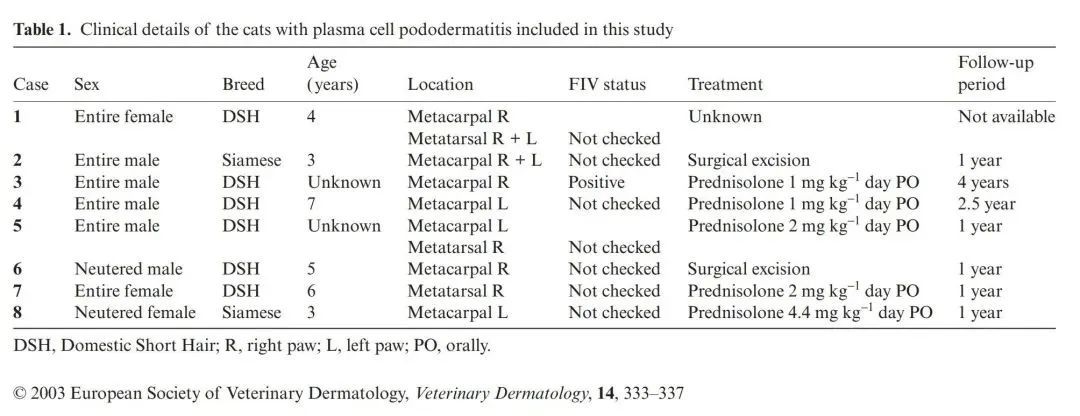In addition, some studies have found that cats that develop foot dermatitis tend to have other immune disorders, or conditions that affect immunity. Such as stomatitis, feline leukemia, feline AIDS and so on. All in all, cats that suffer from FPP have somewhat abnormal immunity.
These findings are corroborated by previous cases of FPP with secondary eosinophilic granuloma (EGC) and pre-existing stomatitis.
Abnormal immunity ≠ the need to strengthen immunity
Many problems arise precisely because the immune system is "too strong" and occurs when there is no need for an immune response. So you don't have to hear immunity and think "strengthen it." It's good to keep your immune system from getting lazy and overactive, so the most important thing is not to take special supplements, but to eat and have fun!
Symptoms of FPP
1.The mat may be dry and cracked
2.The pads of flesh must swell and bulge
3.Bleeding, ulceration may occur

Accurate diagnosis of FPP requires a sample biopsy, which is not often done because pad sampling is very painful and the wound is not very attractive. The sample contains a large number of plasma cells, possibly a small number of lymphocytes and granulocytes.
Common differential diagnoses include: eosinophilic granuloma, pemphigus decidus, vasculitis, and acetaminophen (paracetamol) poisoning.
Once FPP has been identified, treatment is not difficult. The difficulty is whether the relapse is uncontrollable -- after all, the immune system's temper, who knows? In a few cases, it is difficult to take long-term medication.
Option one: doxycycline
Doxycycline itself is an antibacterial drug, but it also has immunomodulatory effects and is more difficult to use than some specialized immunosuppressants. In a small trial, doxycycline was used for 1-2 months in cats with FPP and the results were as follows:
Unfortunately, the trial was too small, and doxycycline may be too slow to go mainstream.
Option two: immunosuppressive drugs
It's time for our old friend------" Hormone" to show up.Common ones such as prednisolone and methylprednisolone can be considered (be sure to use under the guidance of a physician).Cyclosporine may be considered in some cases.
The onset of treatment is relatively rapid, with effects seen within a week, but the limited literature indicates that the treatment cycle may be 1-2 months (mostly 1-2mg/kg/ day prednisolone).
In a few, extremely severe cases, surgical resection is required.

In ordinary life, you can choose some suitable toys for cats to prevent cats from getting sick.
If you like, you can contact us!
Post time: Feb-06-2023










